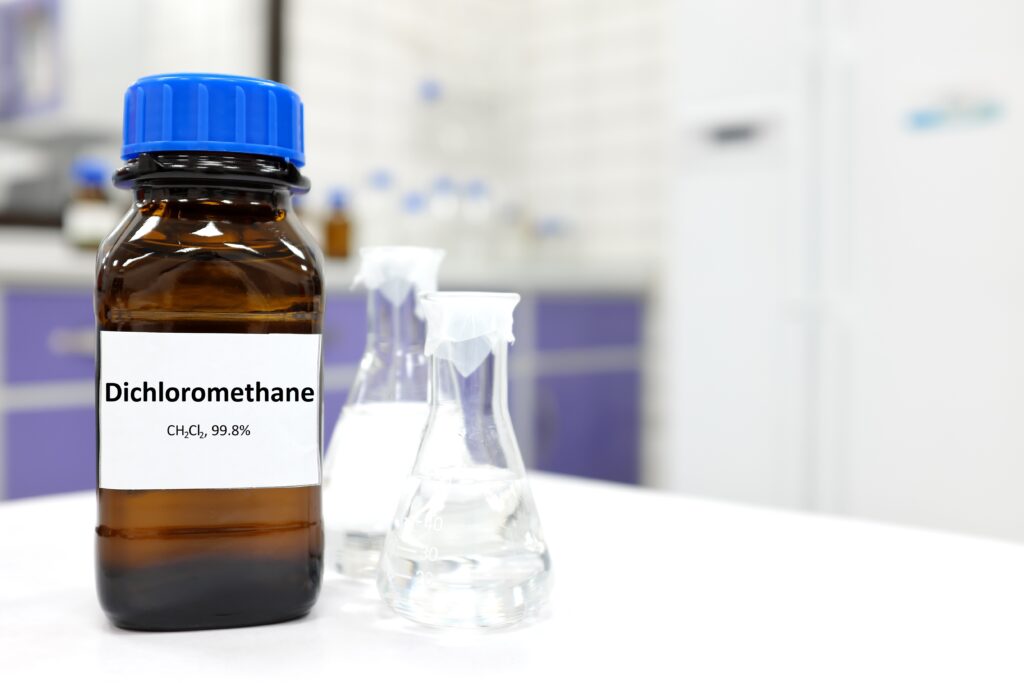What is it?
Methylene Chloride, also known as dichloromethane (DCM), is a colourless, highly volatile liquid with a sweet aroma much like chloroform. This organochloride compound can occur naturally, and is found in wetlands, macroalgae and even volcanoes; however, the vast majority of it is made as a result of industrial emissions.
What is it used for?
DCM is most often created by the treatment of chloromethane/methane with chlorine gas at extremely high temperatures, but it does have some intriguing uses in its own right. Due to its high volatility and capacity to dissolve a broad variety of organic compounds, it makes a useful solvent for many chemical processes. That same volatility lends itself to its use as an aerosol spray propellant and blowing agent for polyurethane foams.
Furthermore, it also has a myriad of uses within the food industry. These include an ability to decaffeinate tea and coffee as well as to prepare extracts of flavourings like hops (and many others). The low boiling point of DCM allows the chemical compound to function in a heat engine which can then be used to extract mechanical energy from minuscule differences in temperature.
A quaint example of this in practice is the ‘drinking bird’ toy – essentially two glass bulbs joined by a tube set on a pair of ‘legs’ (a stand) and decorated to resemble a bird leaning down to drink. DCM is placed within the glass bulbs and creates what’s known as a ‘heat engine’ in order to move in what appears to be perpetual motion. Minor fluctuations in heat cause evaporation and reaction and therefore transfers of energy, allowing the device to move.
Another use of DCM is that it can chemically weld certain plastics, such as electric metres, and also functions as the main component of plastic welding adhesives which are used extensively in model and figurine-building hobbies. In those circles, it is known colloquially as ‘Di-Clo’.
It’s also used in garment printing to remove heat-sealed stickers and labels, in bubble lights, jukebox displays and in civil engineering, and its extract can be used as seaweed fodder for cattle. All things considered, it’s an extremely adaptable product that sees widespread usage.
What are the risks?
DCM is the least toxic of the simple chlorohydrocarbons, yet nevertheless poses several serious health risks. Due to its high volatility, inhalation is extremely dangerous and it can also be absorbed through the skin if proper precautions are not undertaken. Symptoms of overexposure due to inhalation include:
- Difficulty concentrating
- Fatigue
- Dizziness
- Nausea
- Headaches
- Numbness
- Weakness
- Irritation of the upper respiratory tract
- Irritation of the eyes
Severe overexposure can cause suffocation, optic neuropathy, hepatitis, loss of consciousness, coma and even death. Meanwhile, prolonged skin contact can cause irritation and chemical burns.
It may also be a carcinogen and has been associated with cancer of the lungs, liver, pancreas, breast and salivary gland according to studies on laboratory animals. In people with pre-existing heart conditions, exposure to the compound can result in abnormal heart rhythms and heart attacks, while those who have pre-existing liver, nervous system or skin conditions may find their ailments worsen if exposed.
What Can I Do To Avoid It?
One should always take the necessary precautions when dealing with DCM, be it following workplace guidance set in place through your company, effective and safe Personal Protective Equipment (PPE) or appropriate instruments/containers.
The most common testing method is urinalysis, wherein a sample is taken and then assessed at a laboratory. You may have dangerous exposure if your parts per million (PPM) reaches above 30.







